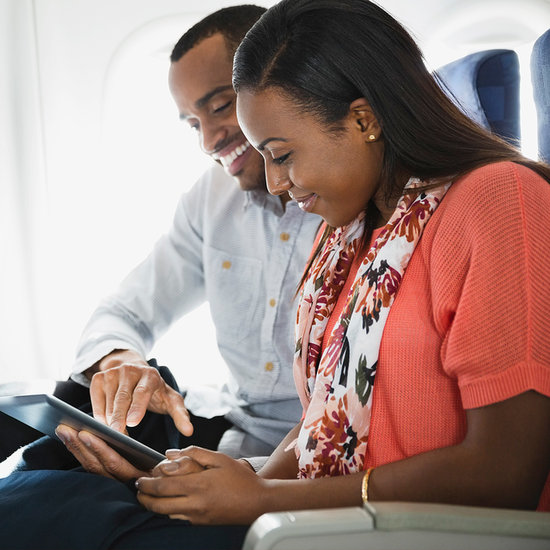Rules For Electronics on Planes
Fly the Now Gadget-Friendly Skies
FA-YAY! The Federal Aviation Administration (FAA) is loosening its policy on the use of personal electronics during flight. The new regulations mean that fliers who are knee deep in the Divergent series won't have to turn off their ereaders or tablets for takeoff — as long as cellular service is turned off or the device is in airplane mode.

If, however, your flight has WiFi, you will still be able to connect to the Internet and use Bluetooth accessories with your device. Laptops are the only gadgets that need to be completely stowed beneath your seat or in the overhead compartment for takeoff and landing.
Reading ebooks, playing offline games, and watching videos are fair game for most of the flight. But passengers, at least for now, will need to hold their devices in their hand or place them in the back seat pocket during takeoff and landing.
Don't get too excited for holiday travel just yet. Each airline will need to adopt these new guidelines of its own accord. As of Nov. 1, Delta and Jet Blue began allowing gate-to-gate use of devices, freeing passengers to use gadgets like ereaders at any time during their flights.
Read on for important things to know about the expanded use of personal electronic devices from the FAA.
Take heed of this info, straight from the Federal Aviation Administration.
- Make safety your first priority.
- Changes to personal electronic device (PED) policies will not happen immediately and will vary by airline. Check with your airline to see if and when you can use your PED.
- Current PED policies remain in effect until an airline completes a safety assessment, gets FAA approval, and changes its PED policy.
- Cell phones may not be used for voice communications.
- Devices must be used in airplane mode or with the cellular connection disabled. You may use the WiFi connection on your device if the plane has an installed WiFi system and the airline allows its use. You can also continue to use short-range Bluetooth accessories like wireless keyboards.
- Properly stow heavier devices under seats or in the overhead bins during takeoff and landing. These items could impede evacuation of an aircraft or may injure you or someone else in the event of turbulence or an accident.
- During the safety briefing, put down electronic devices, books, and newspapers and listen to the crewmember’s instructions.
- It only takes a few minutes to secure items according to the crew’s instructions during takeoff and landing.
- In some instances of low visibility — about one percent of flights — some landing systems may not be proved PED tolerant, so you may be asked to turn off your device.
- Always follow crew instructions and immediately turn off your device if asked.




















































































